5G Networks Demand More From Cables and Connectors
A new generation of fiber optic cable and high-speed connectivity products is laying the groundwork required to make 5G networks possible.
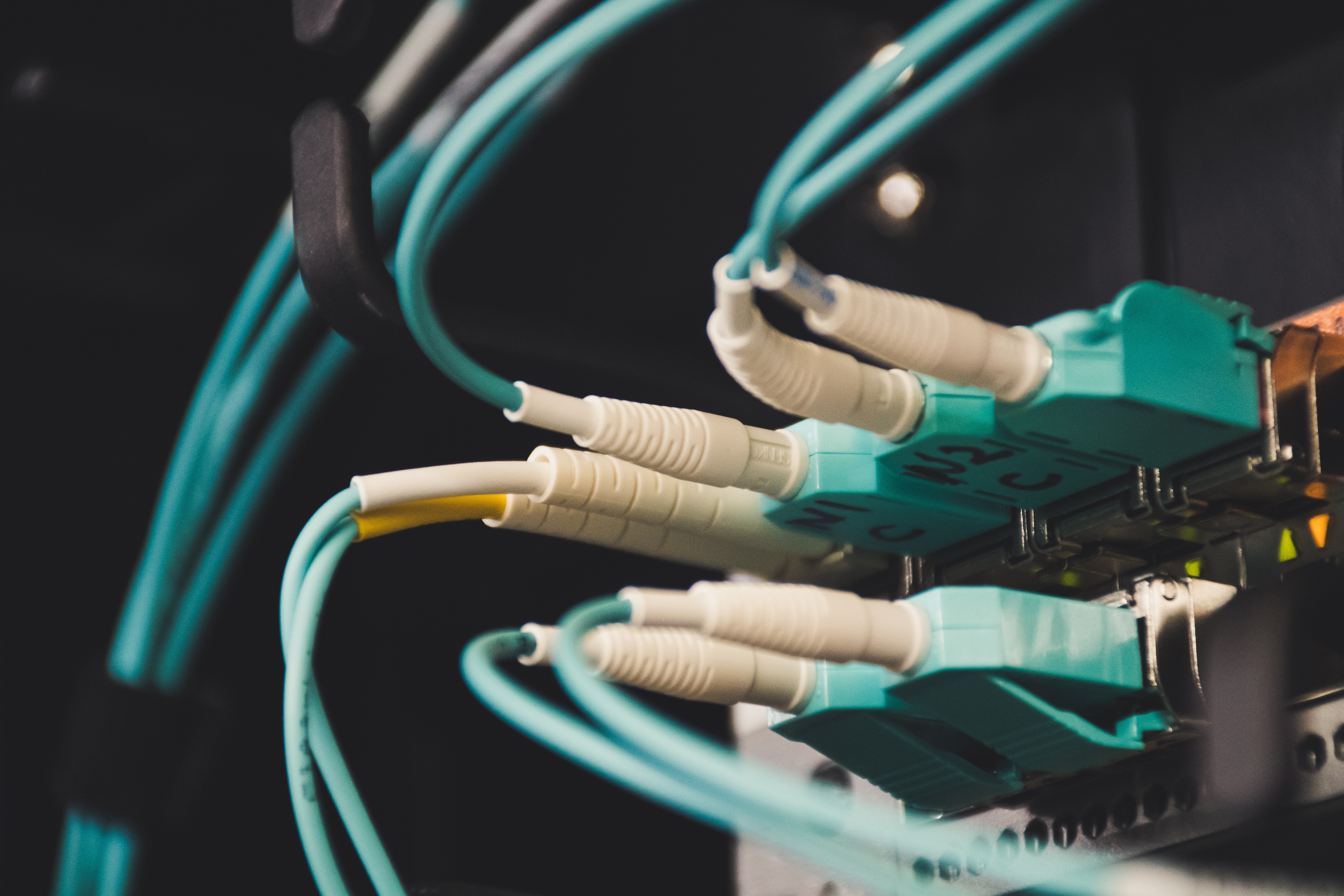
Providers of fiber optic cables, high-speed connectors, and cable management systems are all gearing up to meet the challenges of developing the infrastructure required for 5G network deployment. The impending arrival of 5G networks is having a major impact on these critical components, with a special emphasis on the connectors and cables employed in both wireless and wireline infrastructure. Recently announced plans to accelerate 5G network development in the US and UK have energized the entire network industry, which now sees western economies attempting to compete with China’s centralized rollout of 5G technology.
This year’s Optical Fiber Communications Conference and Exhibition (OFC) revealed major momentum for real-world 5G adoption, with networks pushing toward 800G. “The arrival of 5G networks will change everything, including autonomous driving, real-time vehicle-to-vehicle (V2V) communication, and even remote-assisted surgery,” said Gilles Garcia, communications business lead director at Xilinx, a leader in FPGA and fast networks development, who also noted that “moving from 10G to 400G can be challenging.” Ethernet Alliance members, including Amphenol, Cisco, Xilinx, and Juniper, jointly demonstrated that 400G link performance is functional and real at OFC 2019, which took place in San Diego, California, March 3 – 7.
However, making this leap on a large scale will depend on the adoption of new cable technologies. Around the world, existing copper-based mobile backhaul architecture is in the process of being upgraded to packet-based transport over fiber. Fiber optic cables can accommodate much higher bandwidths and are thus essential for creating future-proof 5G networks equipped to handle the inevitable further scaling of speeds. Cables leading to new small-cell towers and deployed in new equipment and devices designed to be compatible with 5G networks must be able to handle increased speeds and density while simultaneously reducing latency, consuming less energy, and generating less heat. In support of these new market demands, an array of new connectivity products will make this transition easier.
Improved Cable Deployment and Management
Cable deployment and management processes have made great progress in recent years. Many new assemblies provide time-saving features for installations and troubleshooting. For instance, Amphenol’s Traceable Patch Cord fiber optic cable assembly system allows installers to trace the fiber cable by injecting a light source for the fiber to flash a red light.
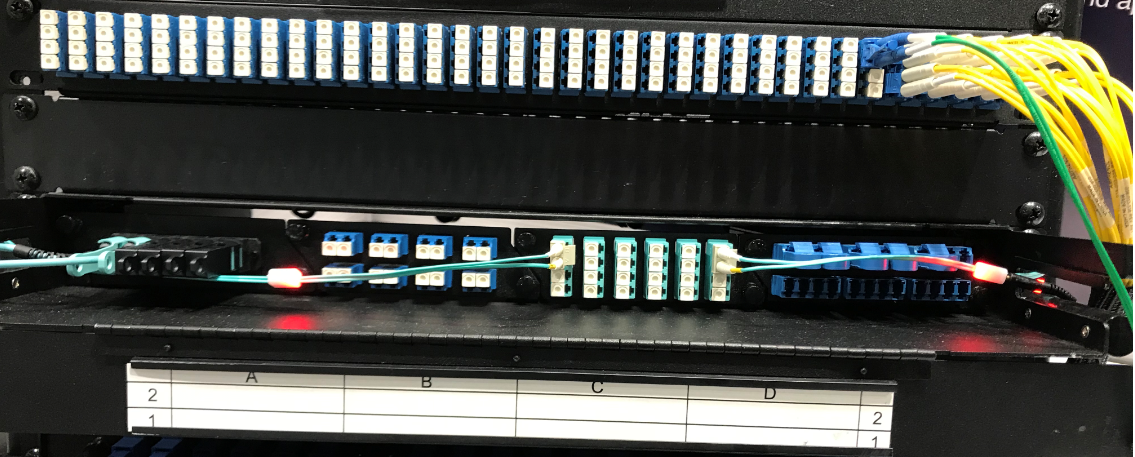

Amphenol’s Traceable Patch Cord light source can be used to inject light into the fiber patch cords.
The Traceable Patch Cord makes it easier to trace the far end of the fiber patch cord and is very useful in IT/datacom backbone and data centers where multiple servers are stored and connected to other servers and network devices in a crowded cable assembly setup. The red LEDs are installed at both ends of the cable jumpers, and are especially crucial when there are a lot of cross connects. These TIA/EIA and IEC standard-based assemblies are capable of 400Gb/s and support both single-mode bend-insensitive fiber (≤ 0.15dB) and multi-mode OM3 and OM4 fiber (≤ 0.50dB) with an operating range of <0.3dB change from -40°C to +85°C. Expected durability is 500 mating cycles (<0.2dB change) with ultra physical contact (UPC) connector return loss of ≤-55dB. Molex offers a similar solution in which the fiber link will flash green to help installers find and identify the fiber optic cable.
Smaller High-Speed Cables
To squeeze more fiber optic cables into ever smaller spaces, cable manufacturers are working hard to reduce the size and diameter of cable bundles. Corning, for example, is shrinking the size of its 400Gb/s cable with reduced-diameter coatings. The Corning SMF-28 Ultra 200 fiber cables feature a coating thickness of just 200 microns, down from previous products’ 245 microns, while maintaining a 125-micron glass cladding diameter in single-mode fibers.
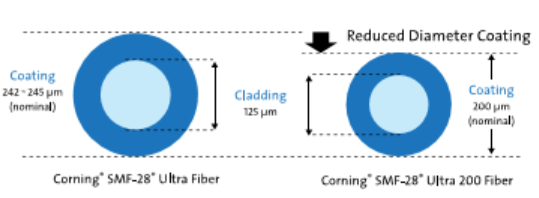
The Corning SMF-28 Ultra 200 fiber cables shaved 45 microns off previous cable coating thicknesses, going from 245 microns down to 200 microns, to achieve a smaller overall outer diameter (OD).
These cables are also ITU-T G.652.D and ITU-T G.657.A1 compliant and, although the standards call for a 10-micron radii bend, the Corning cables allow for a 33-micron radii bend, providing a notable 30% improvement.
As high-speed network infrastructure continues to evolve to handle higher and higher speeds and form the foundation of 5G networks, fiber optic cable solutions like these will replace the copper cables in the transatlantic subsea transmission conduits. Corning’s TXF Optical Fiber cables are made of low-loss, silica-core fiber material, which has a large effective area and will be able to deliver high-data-rate transmission over the long haul. With two 200km subsea backhaul links capable of supporting 400Tb/s, these ITU-T G.654-compliant fiber solutions could potentially provide the large-scale cable required for the mass global rollout of 5G network technology.
Similarly, the Italy-based Prysmian Group has recently added a new, denser 6,912 fiber cable to its FlexRibbon family that can support a maximum length of 9,843’ (1.86 miles or 3km). It contains 6,912 bend-insensitive fiber counts that fit within a two-inch duct. The cable is comprised of 24 bundles or ribbons that are each comprised of 288 fibers for easier cable management. In addition, the outer diameter (OD) of the cable is just 1.54”, leaving the 2” duct just 60% filled to support future expansion.
More Powerful Interconnects
Suitably powerful connectors are also required to enable data centers, cell towers, and other applications to handle 5G transmissions. Samtec’s NovaRay is able to deliver 112Gb/s per channel in PAM4 mode. To achieve the 4.0Tb/s aggregate data rate, the differential pairs have to be fully shielded to minimize crosstalk (to 40GHz). By using BGA rather than traditional die attach to increase density, these cable assemblies can be manufactured with 8 to 32 signal pairs, and the next generation will include 72 pairs. This design also reduces board space by 40% over the previous version. At recent trade shows, Samtec also displayed a 56Gb/s (PAM4) cable assembly with a compact 7.6mm diameter. To achieve 400G, developers will typically group 4x100Gb/s or 8x50Gb/s together. The 34AWG low-skew (<3.5ps/meter) cables in the Samtec solution improve bandwidth (28–112+Gb/s) and are configured in 8 and 16 pairs, with plans for the next generation to include 24 pairs.
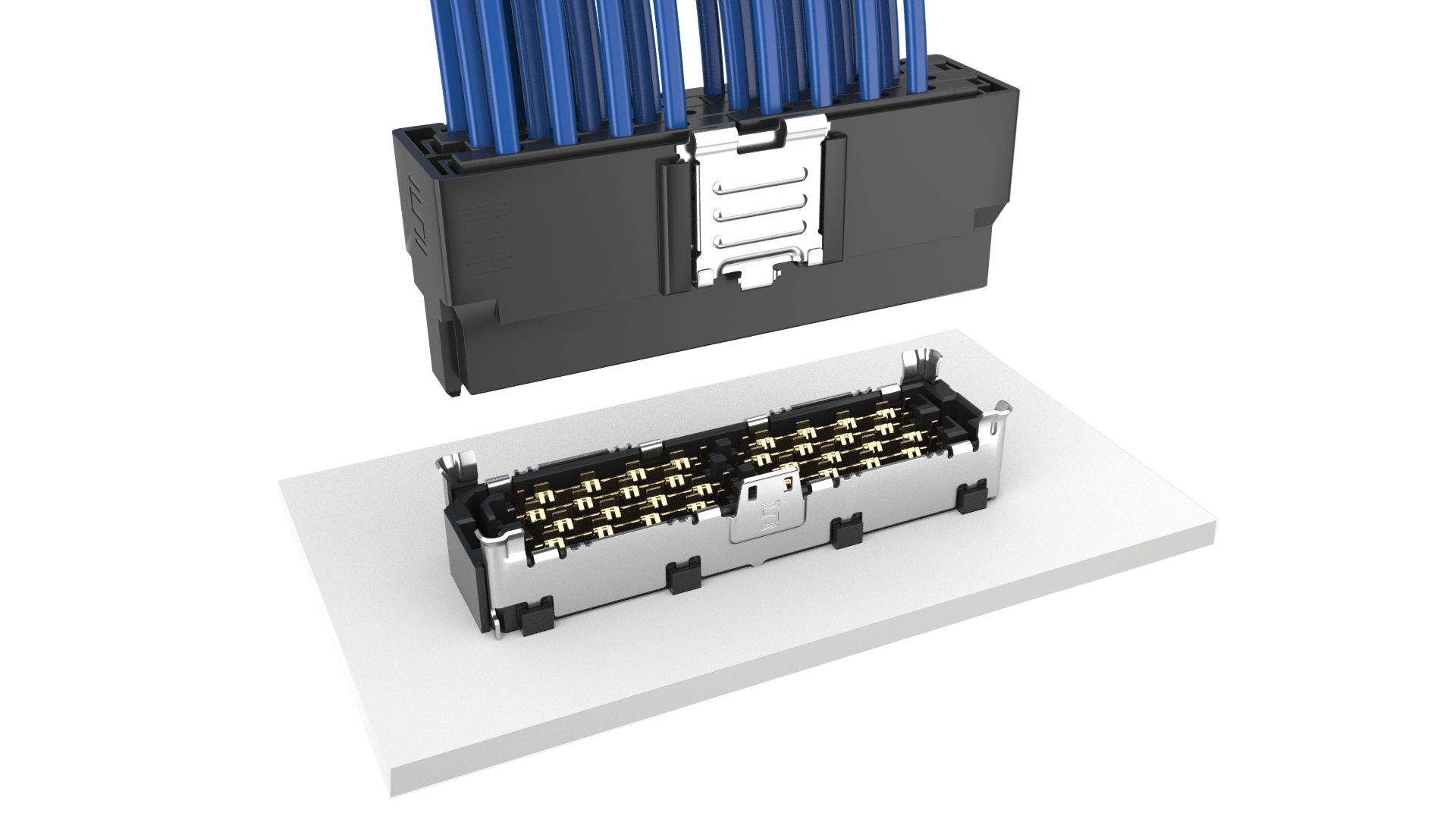
Samtec’s NovaRay is able to deliver 112Gb/s in PAM4 mode per channel.
Samtec’s ExaMAX® High-Speed Backplane System supports 56Gb/s, has a 2.00mm column pitch, is compatible with PCI Express, Intel OPI and UPI, SAS, SATA, Fibre Channel, InfiniBand, and Ethernet protocols, and meets OIF CEI-28G-LR (28Gb/s) standards. The current rating is 0.5A per signal contact and rated operating temperatures extend from -55°C to +85°C.
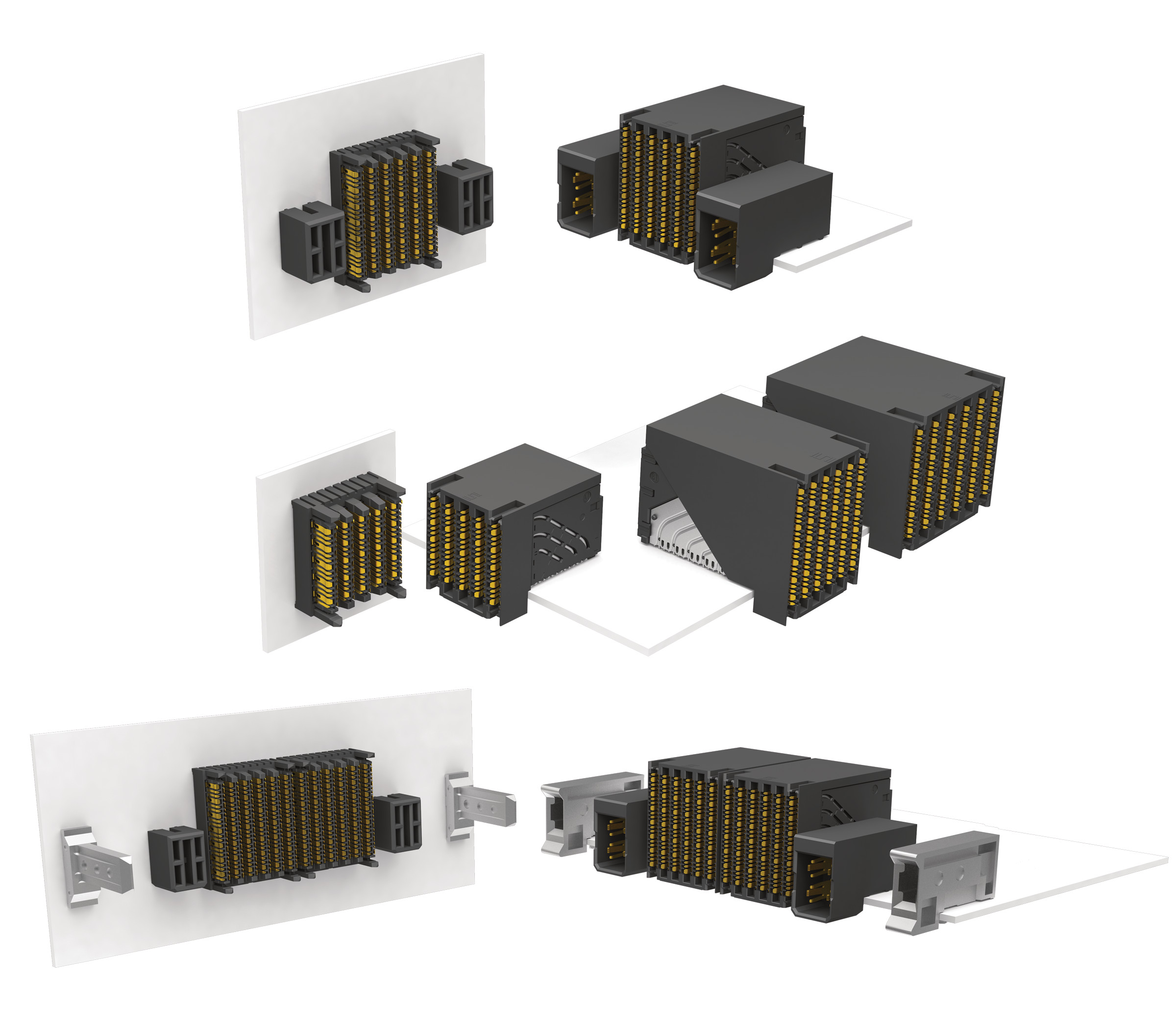
Samtec’s 2mm column pitch ExaMAX connector delivers 56Gb/s and supports PCI Express, Intel OPI and UPI, SAS, SATA, Fibre Channel, InfiniBand, and Ethernet.
Next-generation cables and connectors are actively laying the groundwork for 5G networks. Significant rollouts are expected to begin in 2020.
John Koon is the president of Tech Idea Research and has held various management roles at Fortune 500 companies. As a technology editor and writer, he covers aviation, AI, autonomous driving, robotics, automation, medical innovations, wireless technologies including 5G and low-power WAN, Fog Computing (beyond cloud) and edge, IoT, NB-IoT, LoRaWAN, cybersecurity, blockchain, digital twin, m2m, MEMS, and sensors-related software, fiber optics and interconnects, aerospace/defense, manufacturing, semiconductor, power and battery, COTS advancements, and emerging technologies. He has a BS in engineering from California State Polytechnic University, Pomona, and an MBA from San Diego State University. He can be reached at [email protected].





